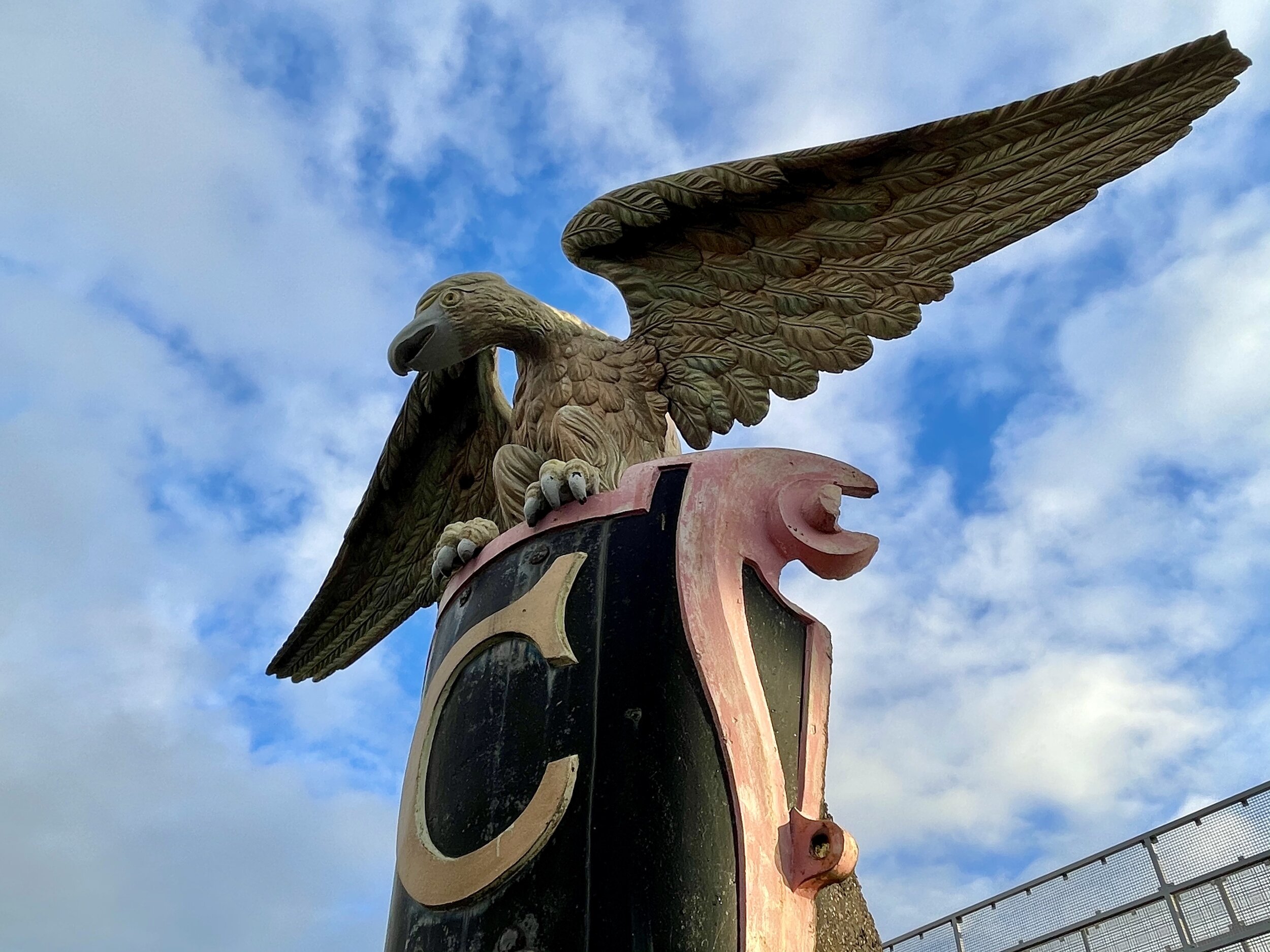
Virtual Museum
Crewe’s Eagles
The town of Crewe has long been associated with four Cast Iron Eagles sat atop a crest bearing the letter ‘C’ which is believed to stand for Crewe. However the exact origin of the Eagles has long been a mystery, it is claimed that they were originally cast at the Horseley Ironworks in Tipton, Staffordshire as part of Robert Stephenson’s Dee Bridge in Roodee, Chester on the Chester to Holyhead Railway.
This claim is further supported by the faint outline of the letter ‘H’ inside the ‘C’ on the crest below each Eagle which is believed to stand for Holyhead. On 24 May 1847, the carriages of a local passenger train to Ruabon, fell through the Dee Bridge into the river below, tragically killing five people.
1847 | A sketch of the Dee Bridge Disaster depicting the Eagles in place.
1938 | One of the Eagles on the bridge within Crewe Works.
The Eagles are mentioned multiple times in the report of the Coroner’s inquest into the bridge failure, following the incident, the bridge was repaired and strengthened and eventually replaced in 1871. The recovered scrap metal which included the Eagles was sent to Crewe Works so that it could be recycled.
It is believed that Francis Webb spotted the Eagles amongst the scrap on Stone Yard Bank near Flag Lane and had them rescued. They were then mounted on a bridge across the Crewe to Chester Line which was used to move rail vehicles in and out off Crewe Works, this would become known as the Eagle Bridge.
1987 | The Eagle being lifted into place on top of the North Junction Signal Box at the Heritage Centre.
2021 | The crest of the Eagle on top of the North Junction Signal Box with the faint outline of the letter ‘H’.
During the 1980s the demand for the repair of locomotives at Crewe started to decline, until eventually, the Eagle Bridge became too costly to maintain. The Eagles were removed from the bridge with one being mounted at the then entrance to Crewe Works on West Street.
The other three Eagles were placed into storage within the works, that is until 1987 when two of the Eagles were moved here to the Heritage Centre where they can still be seen today.
Where are the Eagles now?
The Eagles now perch impressively as they watch over three different locations within the town. Two of the Eagles are located at the Heritage Centre, the first can be seen at the entrance to the museum with the second located on the roof of the North Junction Signal Box.
The third Eagle is located close to the site of the Eagle Bridge at the Eagle Bridge Health and Wellbeing Centre on Dunwoody Way which opened in 2007, with the fourth example located at the entrance to the Crewe International Electric Depot (Crewe IEMD) on Wistaston Road.
Crewe Heritage Centre, Vernon Way, CW1 2DB
Crewe Heritage Centre, Vernon Way, CW1 2DB
Eagle Bridge Health Centre, Dunwoody Way, CW1 3AW
Crewe IEMD, Wistaston Road, CW2 7RJ
The site of the Eagle Bridge today.
In September 2014, pub company Greene King submitted a planning application to Cheshire East Council to construct a branch of their ‘Hungry Horse’ chain of pubs on Dunwoody Way. The new pub would be located only 200 metres away from the site of the Eagle Bridge, following approval and construction, the pub was opened on 10 April 2015 by Mischa Leake a pupil at Mablins Lane Primary School, Crewe.
The pub would receive the name ‘The Four Eagles’ not only marking Crewe’s connection with the Eagles but also in recognition of the pubs close proximity to the site of the Eagle Bridge.









